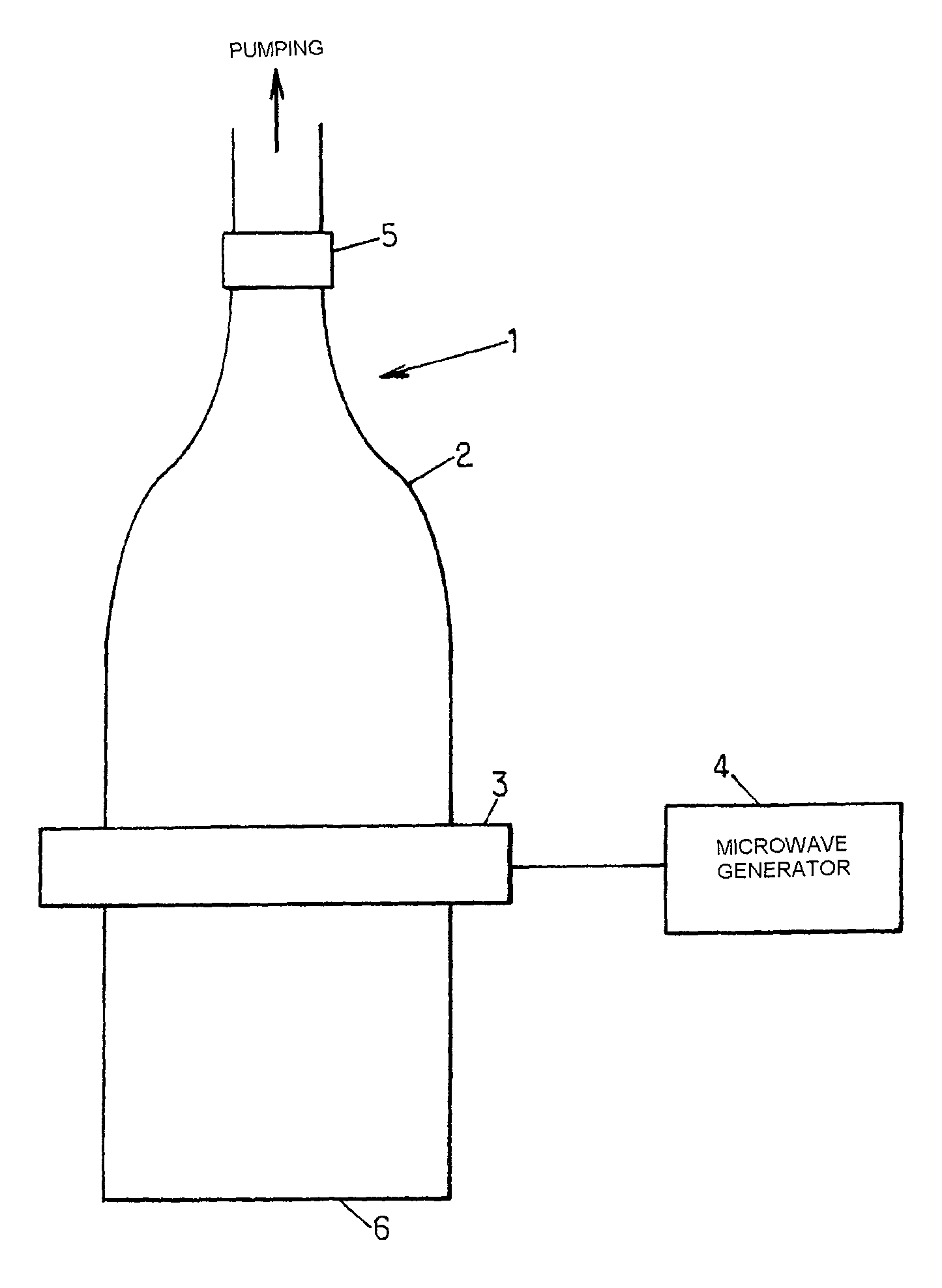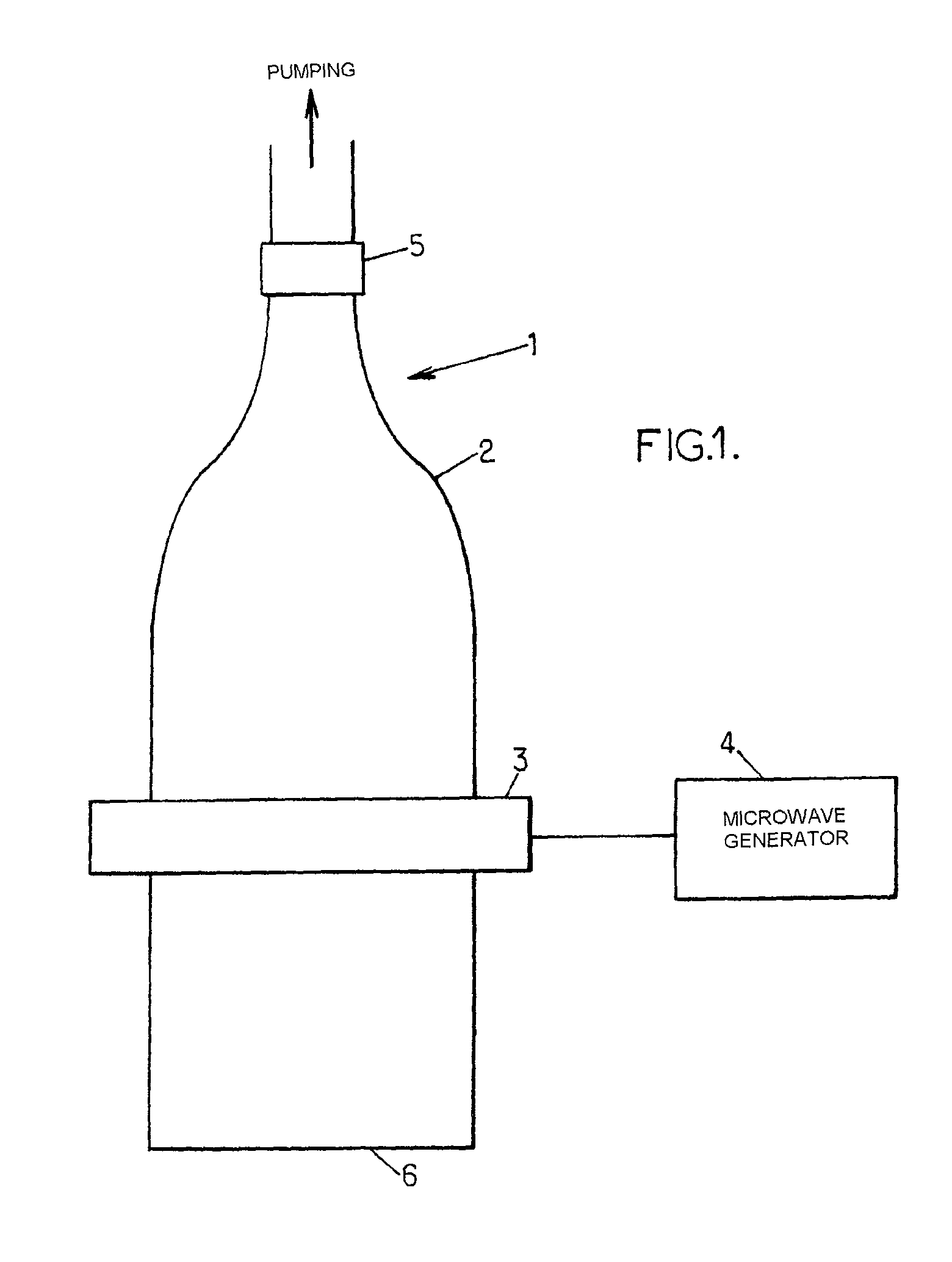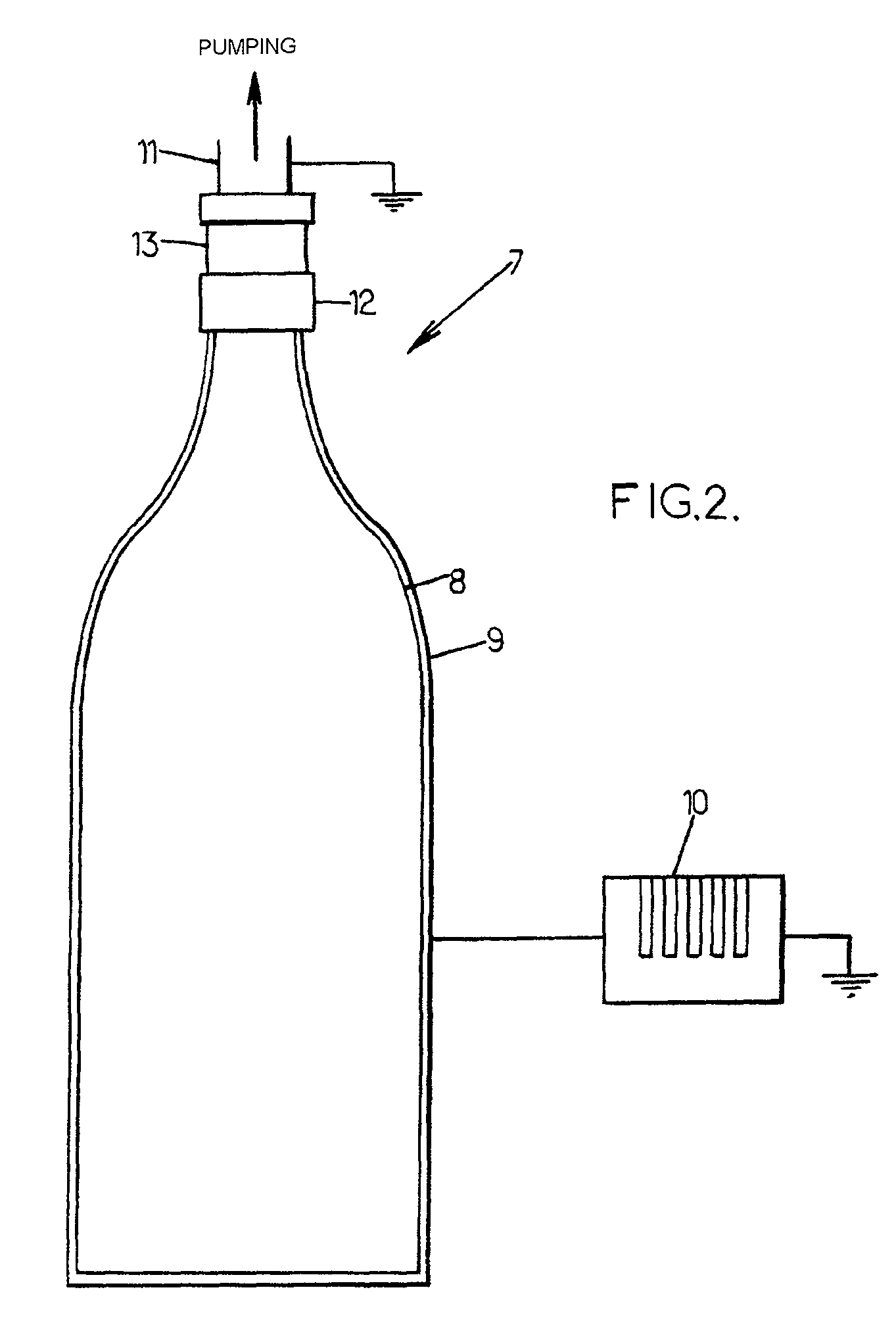Method for cold plasma treatment of plastic bottles and device for Implementing Same
a technology for cold plasma treatment and plastic bottles, which is applied in the direction of chemical vapor deposition coating, electrical equipment, coatings, etc., can solve the problems of inconvenient operation, high cost of treatment, and inability to meet the requirements of sterilization, etc., and achieves the effect of reducing the risk of microbial contamination, reducing the risk of contamination, and reducing the cost of treatmen
- Summary
- Abstract
- Description
- Claims
- Application Information
AI Technical Summary
Benefits of technology
Problems solved by technology
Method used
Image
Examples
example 1
[0149]The invention can be applied to any aseptic bottling line.
[0150]A polymer preform is transformed into a bottle in a conventional extrusion blow molding device. The just extruded bottles are conveyed to a treatment station comprising a plasma device as shown in FIG. 1.
[0151]The means for maintaining the vacuum, for rapidly opening and closing the treatment chamber, for injecting the process gases, for loading, unloading the bottles, and for handling said bottles, are those conventionally used in bottling lines.
[0152]A vacuum of 1.0 mbar is produced inside the bottle and an input of a N2 / O2 mixture in a N2 / O2 molar ratio of 90 / 10 is introduced into the bottle. A vacuum of 50 mbar around the outer wall of the bottle is created to prevent any deformation thereof.
example 2
[0153]A polymer preform is transformed into a bottle in a conventional extrusion blow molding device. The just extruded bottles are conveyed to a treatment station comprising a plasma device as shown in FIG. 2, in which a metal replica of the extrusion mold constitutes the hollow cathode.
[0154]The means for maintaining the vacuum, for rapidly opening and closing the treatment chamber, for injecting the process gases, for loading, unloading the bottles, and for handling said bottles, are those conventionally used in bottling lines.
[0155]A vacuum of 0.2 mbar is produced inside the bottle and an input of a N2 / O2 mixture in a N2 / O2 molar ratio of 90 / 10 is introduced into the bottle.
[0156]The level of sterilization of the bottle is monitored using an optical detector that tracks a characteristic signal of an identified oxidizing radical, for example atomic oxygen. If the level of this signal has remained satisfactory for a predefined time (about 1 second), the gas species are then remove...
PUM
| Property | Measurement | Unit |
|---|---|---|
| Time | aaaaa | aaaaa |
| Pressure | aaaaa | aaaaa |
| Temperature | aaaaa | aaaaa |
Abstract
Description
Claims
Application Information
 Login to View More
Login to View More - R&D
- Intellectual Property
- Life Sciences
- Materials
- Tech Scout
- Unparalleled Data Quality
- Higher Quality Content
- 60% Fewer Hallucinations
Browse by: Latest US Patents, China's latest patents, Technical Efficacy Thesaurus, Application Domain, Technology Topic, Popular Technical Reports.
© 2025 PatSnap. All rights reserved.Legal|Privacy policy|Modern Slavery Act Transparency Statement|Sitemap|About US| Contact US: help@patsnap.com



